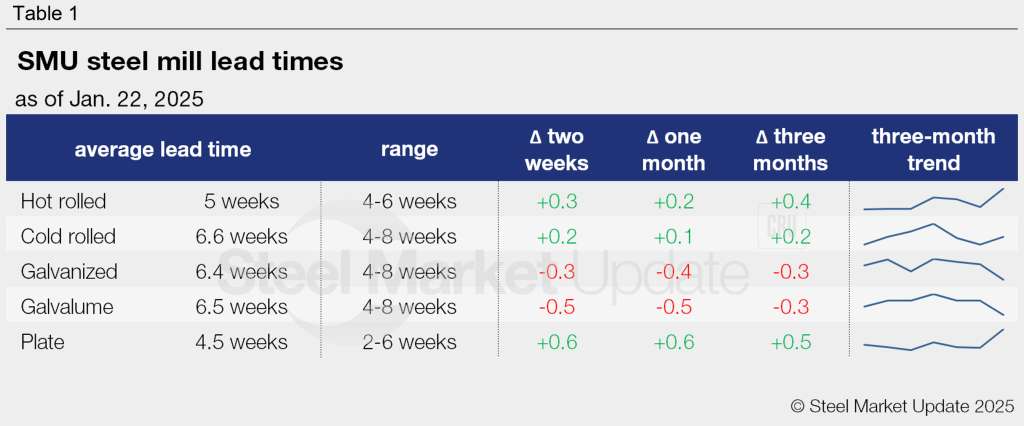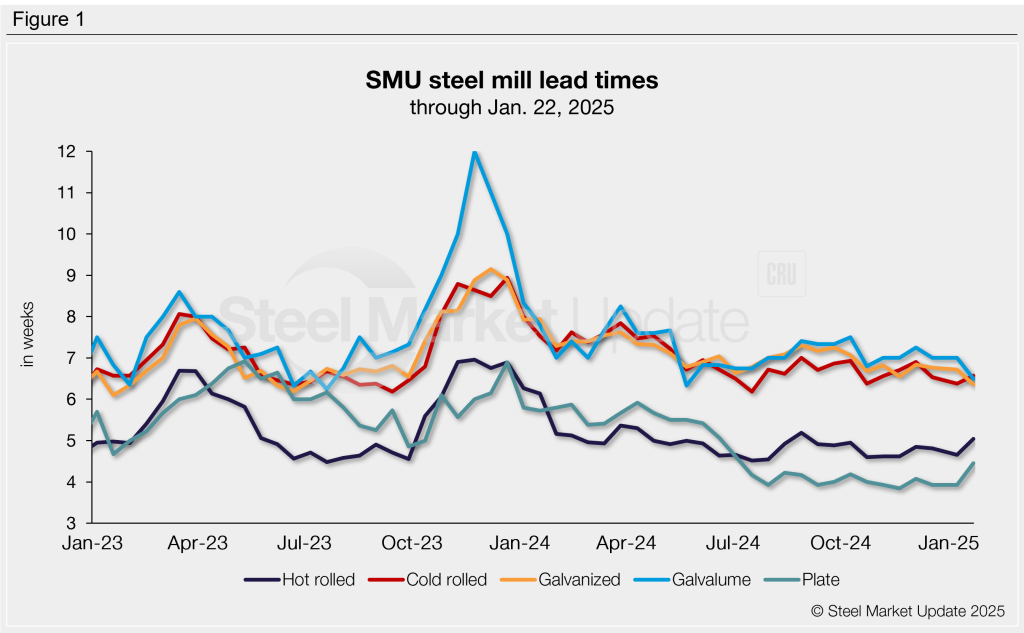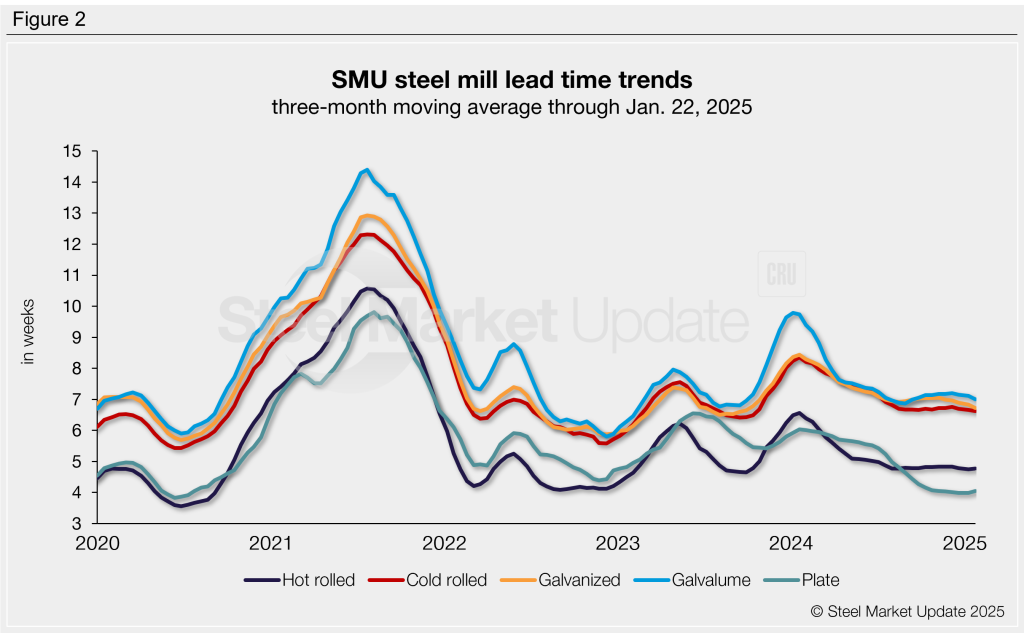SMU Data and Models

SMU Survey: HR, CR and plate lead times up, coated products down
Written by Brett Linton
January 23, 2025
Steel mill lead times were mixed across the sheet and plate products SMU tracks, according to buyers responding to our latest market survey.
Following months of stability, we saw extensions this week in hot rolled, cold rolled, and plate lead times compared to early-January levels. Meanwhile, lead times on coated products edged lower and are now at some of the shortest levels seen in months. Despite these movements, current production times remain at or near historical lows for both sheet and plate products.
The average lead time for hot-rolled steel has increased to five weeks. Tandem product production times are all hovering around six and a half weeks. Average plate lead times have risen to four and a half weeks.
Table 1 summarizes current lead times and recent trends.

Compared to our Jan. 8 market check, several of our lead time ranges have changed this week:
- Hot rolled: Our range narrowed from three to seven weeks to four to six weeks.
- Cold rolled and galvanized: The shortest lead time in both ranges declined from five weeks to four weeks.
- Galvalume: The shortest lead time in our range fell from six weeks to four weeks.

Survey says
Just over half of the respondents we surveyed this week foresee longer lead times two months from now (51%), slightly lower than our early-January crowd. Nearly as many buyers expect production times to hold steady, now at 47% vs. 42% two weeks prior. The small remainder (3%) believe lead times could contract further.
We also asked buyers to comment on the current state of mill production times. Most respondents (53%) think lead times are within typical levels. Almost as many (46%) felt they are shorter than normal. Just 2% of respondents said that lead times are longer than usual.
What respondents are saying:
“There remains an excess supply.”
“There’s more room for lead times to extend than contract.”
“Lead times are still so short domestically. Unless “‘The Don’ puts up the walls against Canadian and Mexican imports, they’ll remain short.”
“Nowhere to go but up from here.”
“Seasonal demand bump again.”
“Extending [two months from now], but I don’t feel it will be much with plenty of supply available for what I feel will be improved demand.”
“I think lead times will extend in the next month and then settle down.”
“Lead times will extend as mills book higher levels.”
Lead time trends
To better highlight trends and smooth out variability in our biweekly data, lead times can be calculated on a three-month moving average (3MMA) basis. Through Jan. 22, 3MMA lead times for both sheet and plate products saw little movement. Overall, 3MMA lead times have trended lower since the start of 2024, flattening out in recent months and remaining at or near one-year lows.
The hot rolled 3MMA is now at 4.77 weeks, cold rolled at 6.62 weeks, galvanized at 6.72 weeks, Galvalume at 7.01 weeks, and plate at 4.04 weeks.
Figure 2 highlights lead time movements since the start of 2020.

Note: These lead times are based on the average from manufacturers and steel service centers participating in this week’s SMU market trends analysis survey. SMU measures lead times as the time it takes from when an order is placed with the mill to when it is processed and ready for shipping, not including delivery time to the buyer. Our lead times do not predict what any individual may get from any specific mill supplier. Look to your mill rep for actual lead times. To see an interactive history of our steel mill lead times data, visit our website. If you’d like to participate in our survey, contact us at info@steelmarketupdate.com.

Brett Linton
Read more from Brett LintonLatest in SMU Data and Models

March service center shipments and inventories report
Steel service center shipments and inventories report through March 2024.

Apparent steel supply contracts in February
The amount of finished steel that entered the US market in February receded from January’s peak, according to our analysis of Department of Commerce and American Iron and Steel Institute (AISI) data.

SMU Steel Survey: Sentiment Indices dip as buyer optimism softens
SMU’s Buyers’ Sentiment Indices experienced multi-point declines this week, though both remain positive and continue to reflect optimism among steel buyers for their companies' ability to be successful.

SMU Scrap Survey: Current Buyers’ Sentiment flat, Future Sentiment tumbles
SMU's Current Scrap Buyers' Sentiment Index remained flat this month, while the Future Sentiment Index declined.

SMU Survey: Steel mill lead times show diverging trends
Buyers responding to our latest market survey reported that sheet lead times continue to gradually decline from recent highs. Meanwhile, plate lead times increased to levels last seen one year ago.
